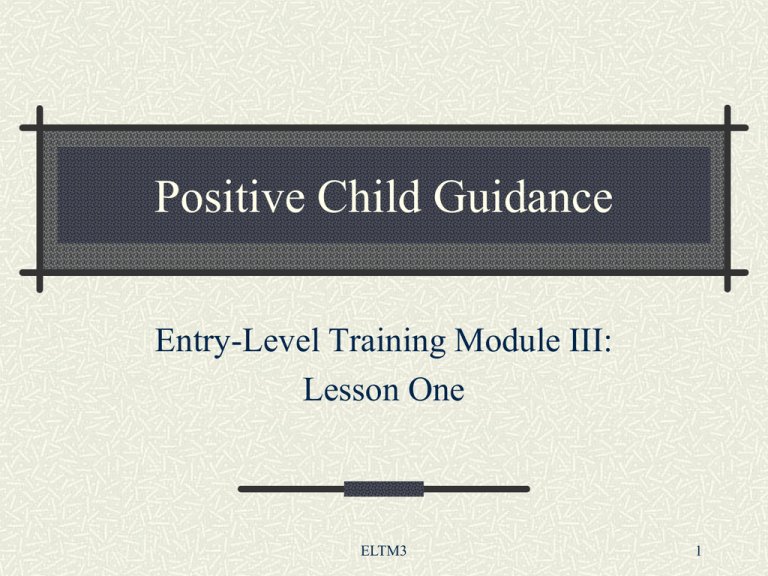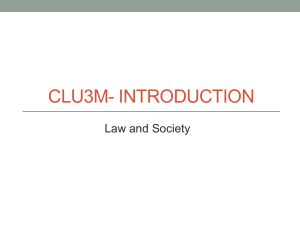Positive Child Guidance
advertisement

Positive Child Guidance Entry-Level Training Module III: Lesson One ELTM3 1 Terms to Know… Guidance Long-term strategy that teaches children desired behaviors without diminishing the child’s self-esteem Discipline One part of child guidance that uses external control over the child to teach desired behavior Punishment * Negative action taken by an adult to coerce or force a child to obey them. It usually involves physical or emotional pain. Mis(taken)-behavior Most common reason for misbehavior. S/he is mistaken about how best to get his/her need(s) met. Usually experimentation, imitation, or has an urgent unmet need. ELTM3 2 Punishment vs. Guidance imposes penalty imposes control not related, respectful moral judgment overpowering inconsistent teaches, encourages shares control related, respectful behavior is judged, not child empowering consistent ELTM3 3 The Problem with Punishment Decreases self-esteem and ability to learn Increases aggression, resentment, resistance, rebellion Decreases self-control, adults have to continually monitor children’s behavior Teaches, “when you’re angry, hit” Doesn’t teach constructive way to resolve conflict Can create withdrawn and passive children Exposes children to violence ELTM3 4 Prohibited Actions Corporal punishment * Emotional abuse * Unsupervised separation from the group Punishment for toilet accidents Withholding food, light, warmth, clothing, or medical care as punishment Physical/mechanical restraints ELTM3 5 Guidance Terms/Techniques Ignore behavior Prevent problems Natural consequences Modeling Distraction Redirection/substitution* Active listening I -messages ELTM3 Offer choices Reinforcement Logical consequences Limit-setting Teach social skills Problem-solving Response cost Time-out 6 Guidance Styles Permissive Child has all the control over behavior Authoritative Child and adult share control over behavior Authoritarian Adult has all the control over behavior ELTM3 7 Guidance Outcomes We WANT to… Maximize learning and development Prevent problem behaviors Promote positive behaviors Teach children selfcontrol We DON’T want to… Get into power struggles Cause resentment, rebellion, retreat Embarrass, shame, or humiliate Teach children how to be “good” only when an adult is watching or bribing ELTM3 8 Influences on Behavior Environment, physical and social (peers) Attitudes (self-fulfilling prophecy) Cultural Values Family Issues Past Experiences Developmental Stage ELTM3 9 Ghosts in the Nursery… How, when, and why were you disciplined as a child? List all the discipline methods your parent(s) used… List the sayings your parents used when they were angry or disappointed with you… As an early childhood professional*, which of the above techniques or responses will you NOT use? What will you do instead? ELTM3 10 Key Practices The teacher realizes that social skills are complicated and take into adulthood to fully learn The teacher reduces the need for mistaken behavior The teacher practices positive teacher-child relations The teacher uses intervention methods that are solution oriented The teacher builds partnerships with parents The teacher uses teamwork with adults ELTM3 11






